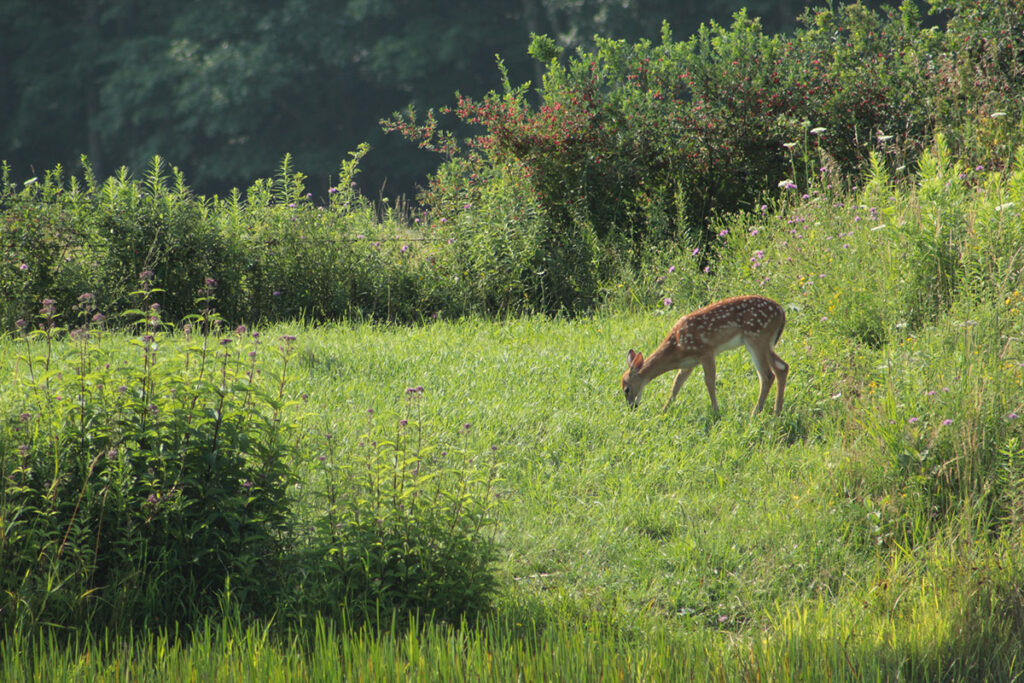A new study published in Emerging Infectious Diseases provides compelling evidence that free-ranging white-tailed deer in northeast Ohio are not only susceptible to SARS-CoV-2 infection but may also act as a long-term wildlife reservoir for older viral variants, including the Alpha variant that disappeared from humans years ago. The research, conducted by scientists at The Ohio State University, the National Institutes of Health (NIH), St. Jude Children’s Research Hospital, and the USDA, underscores how animal reservoirs can sustain SARS-CoV-2 lineages long after they have stopped circulating in humans, potentially allowing for viral mutation and future spillover.
The findings raise concerns for public health and biosecurity, especially given the estimated 30 million white-tailed deer in the U.S. and their frequent interactions with humans. The study reveals a complex picture of viral persistence, host switching, and cross-species transmission with implications for national health security.
Key Findings
Long-Term Circulation of Alpha Variant in Deer
The study identified the Alpha variant (B.1.1.7) of SARS-CoV-2 in five deer sampled in January 2023—over a year after the last detection of Alpha in Ohio’s human population (August 2021). Phylogenetic analysis revealed that these deer viruses clustered with a similar strain found in Pennsylvania deer, suggesting active deer-to-deer transmission across state lines. This marks a rare case of a SARS-CoV-2 lineage persisting in wildlife well beyond its extinction in humans.
Omicron Lineages Also Widespread in Deer
In addition to Alpha, the researchers identified multiple Omicron sublineages—including XBB.1.5.35 and BQ.1.1—in 31 of 36 sequenced deer samples. These findings indicate that deer are acquiring newer variants from humans and are capable of sustaining them through deer-to-deer transmission. Viral clusters were detected across geographically distinct regions, some separated by over 10 kilometers, demonstrating the capacity of Omicron variants to spread among deer populations.
Deer-to-Deer Transmission Across Distances
Two major clusters of Omicron viruses were found to be circulating in deer populations across regions in northeast Ohio, including in areas where hunting is restricted. These clusters crossed major infrastructure barriers, like interstate highways, suggesting extensive natural movement and viral exchange among deer.
Accelerated Viral Evolution in Deer
SARS-CoV-2 was found to evolve nearly three times faster in deer than in humans, with higher rates of both synonymous and nonsynonymous mutations. Notably, certain recurring mutations in the spike protein—including L18F, associated with immune escape—were detected multiple times across independently evolving deer clusters, pointing to possible host adaptation.
Implications for Public Health and National Interest
The persistence of SARS-CoV-2 in white-tailed deer poses a potential long-term challenge to public health. If deer become a true reservoir for SARS-CoV-2, they could enable the re-emergence of older variants or the evolution of novel variants that evade existing immunity or vaccines. This presents a zoonotic risk not only to humans but also to livestock and other wildlife, further complicating disease control efforts.
Surveillance systems and preparedness strategies must evolve to consider the role of wildlife in viral maintenance and evolution. For the general public, especially those in rural and suburban communities where deer are abundant, this highlights the interconnectedness of human and animal health and the importance of monitoring wildlife as part of national biosecurity infrastructure.
As the U.S. continues to grapple with pandemic preparedness, the ability of SARS-CoV-2 to persist, mutate, and potentially spill back from animal reservoirs like deer reinforces the need for robust, cross-sector One Health strategies.
Recommendations for Surveillance and Response
- Expanded Surveillance: Continued genomic surveillance of SARS-CoV-2 in wildlife—particularly in white-tailed deer—should be prioritized across multiple states, with data sharing mechanisms to track cross-border viral movement.
- One Health Integration: Collaborative efforts across human, animal, and environmental health sectors are needed to understand the dynamics of SARS-CoV-2 at the human–animal interface.
- Transmission Studies: More research is needed to clarify the modes of transmission between humans and deer (e.g., environmental contamination, airborne spread) and from deer to other species.
- Risk Assessment Frameworks: Regulatory and scientific bodies should begin to consider deer-origin SARS-CoV-2 variants in their risk assessments, especially as mutation rates and transmission evidence accumulate.
Tarbuck NN, Garushyants SK, McBride DS, et al. Persistence of SARS-CoV-2 Alpha Variant in White-Tailed Deer, Ohio, USA. Emerging Infectious Diseases. Vol. 31, No. 7, July 2025.


